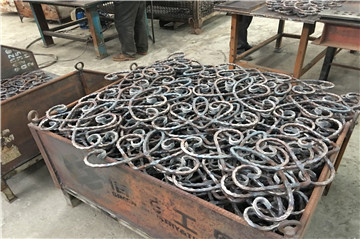What is the structure of wrought iron?
Views: 1100 Update date: Nov 29,2023
Wrought iron is a type of iron with a very low carbon content, typically less than 0.08%. It is known for its toughness, ductility, and malleability. The structure of wrought iron consists of fibers of iron silicate (slag) interspersed in a matrix of pure iron or iron with very low carbon content.
Here are some key features of the structure of
wrought iron:
Fibrous Structure: One of the distinctive characteristics of wrought iron is its fibrous structure. This is a result of the manufacturing process, where the iron is repeatedly heated and worked (wrought) to remove impurities and shape the final product. The elongated fibers give the iron increased strength and ductility.

Slag Inclusions: The fibrous structure is often interrupted by thin layers or bands of slag inclusions. These inclusions are remnants of the impurities that were present in the iron during its production. Slag gives wrought iron its grainy appearance.
Grain Size: The grain size of wrought iron can vary, but it is generally fine-grained. The repeated working of the iron during the manufacturing process refines the grain structure, contributing to its desirable mechanical properties.
Ductility and Toughness: Wrought iron is renowned for its ductility and toughness. The fibrous structure allows it to deform without breaking, making it suitable for applications where flexibility and strength are important.
Low Carbon Content: Wrought iron has a low carbon content compared to other types of iron and steel. This low carbon content contributes to its malleability and weldability but also means that it lacks the hardness associated with high-carbon steels.
Prev News: Why is wrought iron so expensive?
Next News: What is wrought iron made of?
